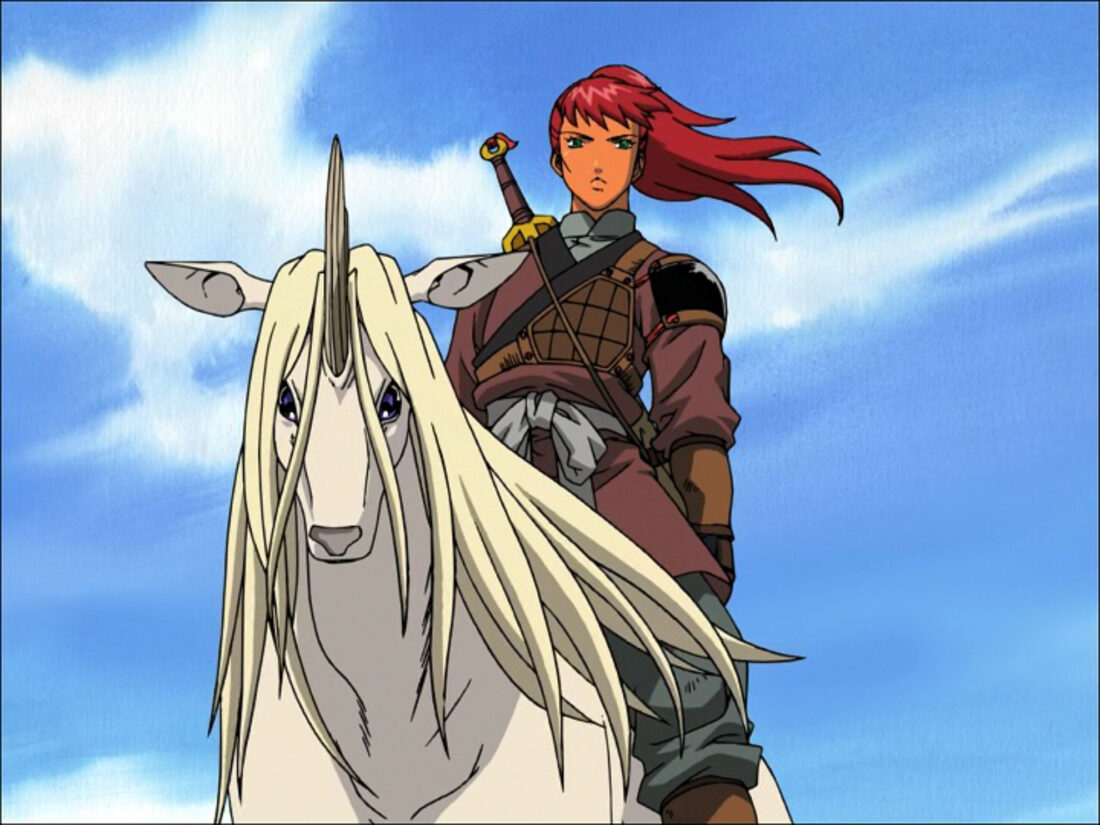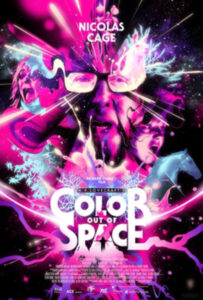‘The Twelve Kingdoms:’ An obscure gem

PHOTO PROVIDED Yoko and Keiki are seen in a still from an episode of “The Twelve Kingdoms.”
I’m going to be honest, I’m doing this one for me. This show is very obscure, but also excellent. It’s also an anime, but…hear me out.
“The Twelve Kingdoms” is an anime series based off of a light novel series by Fuyumi Ono, who I will also shamelessly plug — all of her stuff is great and there is a high likelihood that I will write a column about another of her works at some point. She tends to specialize in stories with a lot of worldbuilding and horror elements.
Twelve Kingdoms focuses on the former.
I tend to like a lot of historical fiction and urban fantasy, and Twelve Kingdoms occupies a beautiful cross-section of that.
The core concept of the show is that there is a parallel world to ours which can sometimes become connected by way of intense storms (all of these things have proper nouns, which I am going to skip on for ease of reading). This is a somewhat common theme in mythology in general, but is particularly popular in Japanese tales due to a variety of anthropological reasons that I won’t attempt here.
Regardless, this other world is extremely different to our world. Everything is different: even the language. People from that world can be cast through storms to our world, and vice versa. Initially, the story follows a trio of high school students who get sent to the world of the Twelve Kingdoms, but, as the light novels are told anthology-style, there is another storyline involving a character who was sent the other way, which is also woven in.
As you may expect, there are in fact Twelve Kingdoms in this other world. This world takes the concept of the Divine Right of Kings and gives it a good twist: in this world, the rulers of each kingdom are considered chosen by the heavens and their actions are thus considered divinely inspired. The better the king or queen rules, the more the kingdom will flourish.
However, if the ruler does not rule their kingdom justly and the people suffer, the ruler will also suffer. In extreme cases, the ruler and his guardian spirit (a kirin — sort of an Asian unicorn, to dumb it down — who chooses the ruler).
Some of the show is a coming-of-age tale, with fairly predictable struggles and angst. But where the show really shines is in the worldbuilding, especially with the discussion of and portrayals of the various kingdoms and their rulers, and the paths which they choose to attempt to make a just kingdom — as well as the untimely ends those rulers who stray from the path meet..
Along the way, you meet many side characters with diverse motivations and backgrounds, including some who are from our world but have been trapped in the other world for most of their lives. With no ability to speak the language, the effect this has on them is generally grim. One particularly memorable early side character who has absolutely no reason to be memorable (seriously, you see this guy for like half an episode tops) was a Japanese soldier during World War II who got spirited away by a storm — just one of the ways that the connection between the two worlds is showcased..
I would be remiss if I didn’t plug the soundtrack, which is absolutely phenomenal. Composed by Kunihiko Ryo, also known as Yang Ban-ean, the music is a perfect mix of swashbuckling adventure and heartstrings-tugging — which really just describes the show. The opening is easily available by a quick search on Youtube, if you want to sample the music and get a feeling for the vibe of the show and the world.
If this all sounds like something that’s interesting to you, I will issue a few warnings before you get started:
— The show ends in a weird spot. It’s a brisk 45 episodes (25-ish minute episodes), with a few skippable recap episodes along the way, but I would suggest ending at episode 39. Episode 40 is a fun sort of epilogue episode for a few characters, so if you’re desperate for more time in the world of Twelve Kingdoms, that’s still fine to watch. Unfortunately, episode 41 begins a new arc, so if you watch those final episodes, you’ll have to track down the conclusion of the storyline in the light novel form or read summaries online (which can be difficult to find, as the show is not very well known or talked about).
— The Black Kirin arc in the middle of the show is only finished in the light novels. That arc is short and comprises episodes 15 through 20. It’s good, and can be worth the watch, but don’t expect to find out what happens to Taiki without digging online. On my most recent watch-through, I skipped these episodes and just mainlined Yoko’s story.
— The show is a bit dated. It aired from 2002-2003, and while the animation by Studio Pierrot is perfectly serviceable, you’re going to get some culture shock if you’re used to more modern animation techniques. Likewise, some of the voice acting can be a little rough at times — or perhaps more appropriately, the translation can lead to some janky lines that I’m sure weren’t easy to deliver.
I will close by mentioning that short length and unfortunate, incomplete ending once again. People have sometimes asked me a thought experiment: if you could add episodes to any show, or let any show reach its conclusion, what show would you choose?
I would choose “The Twelve Kingdoms.” Easily.
“The Twelve Kingdoms” is available for streaming on Crunchyroll, Roku and Freevee. Allegedly, it is also on Amazon Prime, but when I clicked on it to verify, Prime told me the series was unavailable, so I have no idea what’s up with that. The show is also of a sufficient age that you can find entire episodes on Youtube with a little effort, if you’d rather go that route. Beyond that, it has an out-of-print DVD run that has some of the most gorgeous DVD cases I’ve ever seen, as well as a Blu-Ray release. I am unsure if there is a traditional rating for the show, but there is nothing too graphic throughout most of it.
——–
Arianna McKee is Design Editor at The Express.




